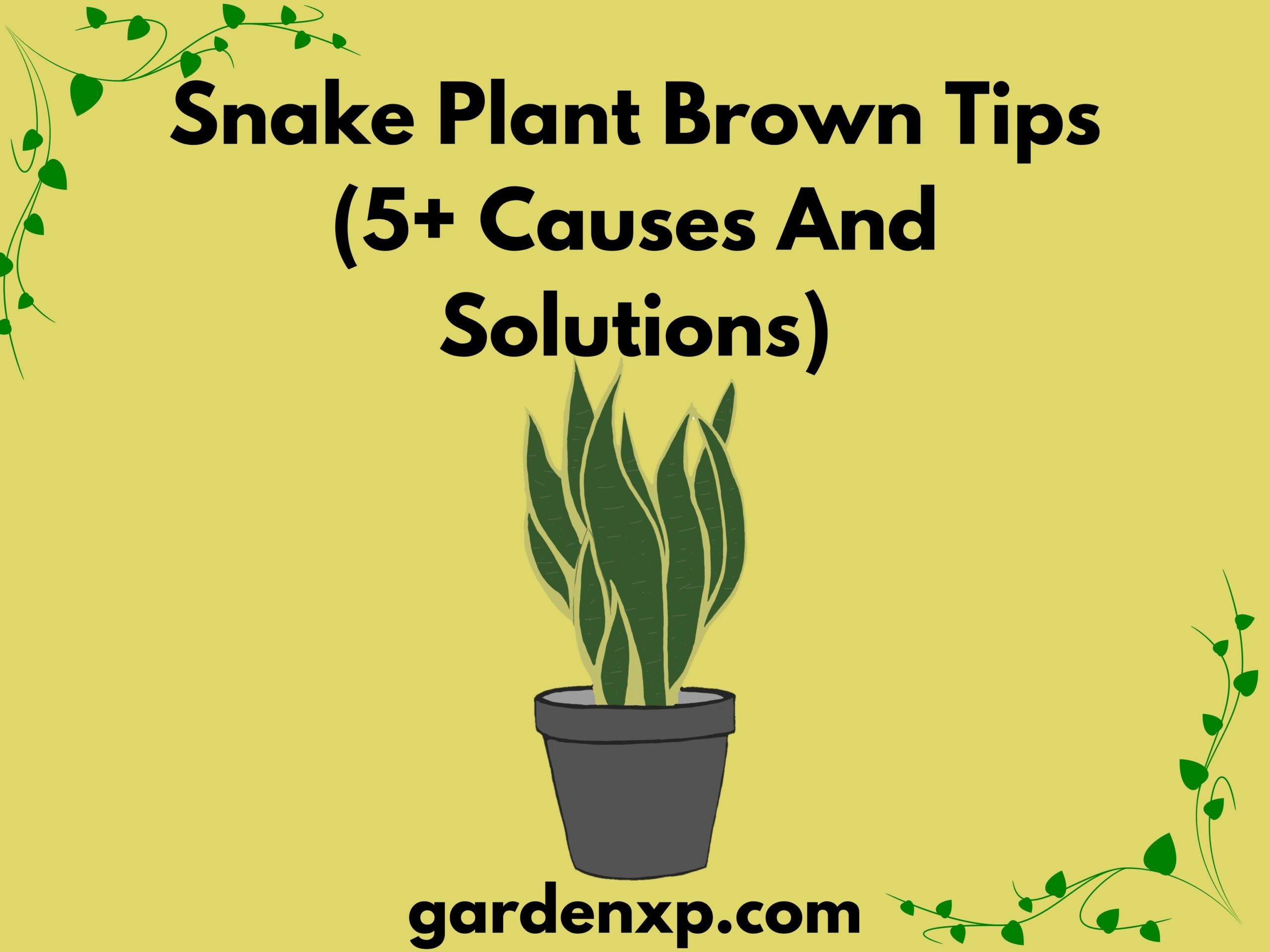7 Snake Plant Problems and Disadvantages that you should know
Here, this article will be discussing some of the Snake Plant Problems and Disadvantages that you should know. Snake plants or also known as sansevieria trifasciata are in great demand for several reasons. These plants are easy to grow with even minimal care and have always been the number one choice for beginners, who just got themselves into the beautiful world of indoor gardening. As easy as it seems to grow these snake plants, they have several disadvantages that you should know.
Quick takeaways:
- It is also called sansevieria trifasciata.
- These are also popular because they are very good at removing harmful toxins from the air and making it pure.
- They look beautiful in any office or room with their swords-shaped leaves, these beautiful plants produce oxygen at night that helps you with a nice good night’s sleep.
- They can easily survive in shades and require minimal care to fully grow.
Despite having so many advantages, several disadvantages may shock you.
Snake Plant Problems and Disadvantages:
Harmful toxins for humans and pets:
Snake plants produce harmful toxins that can affect the health of both humans and animals. This is not a big problem actually because the toxin will only come into action if you are thinking of chewing them. The toxin can cause gastric problems in the body.
The toxin they produce widely goes by the name of saponin. Saponin acts as a natural pesticide and fungicide for the plant. As much as it is useful for the plant it can be harmful to your pets and humans only if it is chewed or ingested into the body. If you do not have any kids in your home this may not be a problem for you. If you have pets or kids then you can simply hang this plant or keep it on a shelf out of their reach.
For more such plant related-articles, you may also read, 10+ Benefits of Snake Plants you need to know!
Snake Plants Grow Slow:
One of the main problems you will face while growing a snake plant is that it grows very slowly. The snake plants tend to reach a height of 6 to 7 feet. This plant loves to expand its roots so growing it indoors inside a pot may restrict the spread of the roots. The plant can easily grow in an atmosphere where humidity is about 40% so it can easily tolerate the random fluctuations of light and shades. Also, you should keep on considering that trimming the leaves or cutting off the tips can easily damage the growth of snake plants.
Snake Plants Don’t flower Regularly:
Being one of the easiest plants to grow, these plants do not flower regularly. This depends upon the species that you have chosen to grow. Some varieties of snake plants may flower every year, and some are so rigid that they won’t even blossom a single flower for the whole year.
Sheds leave when ill:
Snake plants can be easy to grow with minimal care but that doesn’t mean that they will not suffer any health issues. The leaves of the plant are usually straight and stand out from the rest of the plant. If your plant is ill then the leaves may turn white and fall off, if this happens you should quickly take precautions to identify and treat the illness of the plant.
This happens when you provide a lot of water to your plant, or it is not receiving the light it generally requires to grow. Also, if you have chosen too small a pot size which is restricting its roots to grow, then your plant can fall ill and start shedding the leaves.
Overwatering the snake plant:
Snake plants can easily be overwatered without even knowing. This usually happens because this plant shows a similar sign of water clogging for overwatering as it shows for underwatering. In winter you can for months without watering your plant. You should prepare a schedule to solve the watering issue. There is also a simple way through which you can identify if your plant needs water or not. Check for the topsoil, if the soil has become dry you need to water the plant, if the soil is still damp you can wait for a few days.
Overwatering can make your plant infected because it can cause root rotting, curling of leaves, and eventually falling off the leaves. These things can intensively damage your snake plants.
Propagation of the snake plant:
One of the basic problems people deal with is the propagation of the snake plant. There are two different methods that people usually use to deal with this problem. Some people prefer to water their plants which can easily result in overwatering of the plant and eventually can damage the whole plant. Whereas some people prefer cutting for propagation, cutting is not also the best solution because it can damage your plant a lot if not done properly.
Snake plants tend to curl their leaves:
The leaves of the snake plants are straight and generally look like a double-edged sword. But if your plant is ill and has some problems then it will eventually cause its leaves to start curling just like satin pothos. The most common reasons for these are overwatering negligence or pest attacks.
If you observe that the leaves of your plants are curling then you should quickly identify the problem of curling leave and start treating it accordingly. Shrimps are the most common pest that usually attacks and feeds on snake plants. If the leaves of your plants are curling up you can look for black spots on the leaves and identify the problem.
Temperature Requirements:
Usually, this plant can survive in any situation but sometimes it becomes hard for them to survive if there is a sudden rise or drop in the temperature. Snake plants can usually survive in harsh conditions but mostly require temperatures of about 55 to 85 degrees Fahrenheit. If the temperature rises above 85 or drops below 55 the plant can get damaged or may stop growing.
Concluding lines
In this guide, you see that Snake plants or also known as sansevieria trifasciata are in great demand for several reasons. These plants are easy to grow with even minimal care and have always been the number one choice for beginners, who just got themselves into the beautiful world of indoor gardening. As easy as it seems to grow these snake plants, they have several disadvantages that you should know. These are also popular because they are very good at removing harmful toxins from the air and making it pure. Read the guide properly.
FAQ’s
Are snake plant leaves poisonous to cats?
Yes, it can be poisonous for cats to eat the snake plant as you can observe their symptoms like nausea, vomiting, drooling, appetite loss, and many more.
Is snake plant good luck or bad luck?
People do not like the snake plant at most. But it is recommended to plant the snake plant at home as it brings good luck to your home and in your life too.


